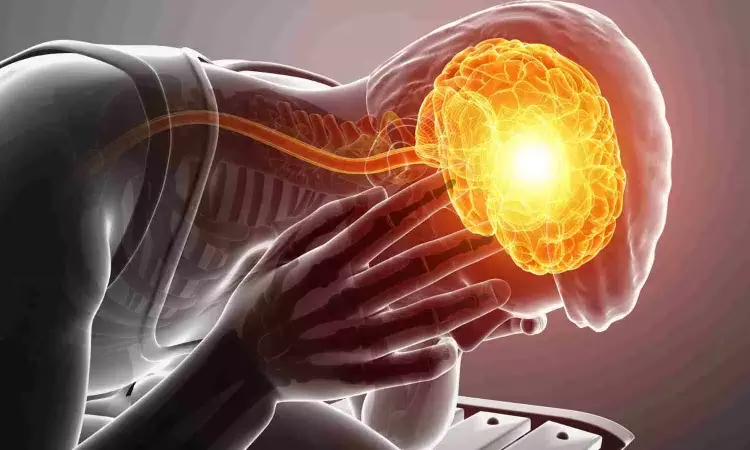- Home
- Medical news & Guidelines
- Anesthesiology
- Cardiology and CTVS
- Critical Care
- Dentistry
- Dermatology
- Diabetes and Endocrinology
- ENT
- Gastroenterology
- Medicine
- Nephrology
- Neurology
- Obstretics-Gynaecology
- Oncology
- Ophthalmology
- Orthopaedics
- Pediatrics-Neonatology
- Psychiatry
- Pulmonology
- Radiology
- Surgery
- Urology
- Laboratory Medicine
- Diet
- Nursing
- Paramedical
- Physiotherapy
- Health news
- Fact Check
- Bone Health Fact Check
- Brain Health Fact Check
- Cancer Related Fact Check
- Child Care Fact Check
- Dental and oral health fact check
- Diabetes and metabolic health fact check
- Diet and Nutrition Fact Check
- Eye and ENT Care Fact Check
- Fitness fact check
- Gut health fact check
- Heart health fact check
- Kidney health fact check
- Medical education fact check
- Men's health fact check
- Respiratory fact check
- Skin and hair care fact check
- Vaccine and Immunization fact check
- Women's health fact check
- AYUSH
- State News
- Andaman and Nicobar Islands
- Andhra Pradesh
- Arunachal Pradesh
- Assam
- Bihar
- Chandigarh
- Chattisgarh
- Dadra and Nagar Haveli
- Daman and Diu
- Delhi
- Goa
- Gujarat
- Haryana
- Himachal Pradesh
- Jammu & Kashmir
- Jharkhand
- Karnataka
- Kerala
- Ladakh
- Lakshadweep
- Madhya Pradesh
- Maharashtra
- Manipur
- Meghalaya
- Mizoram
- Nagaland
- Odisha
- Puducherry
- Punjab
- Rajasthan
- Sikkim
- Tamil Nadu
- Telangana
- Tripura
- Uttar Pradesh
- Uttrakhand
- West Bengal
- Medical Education
- Industry
Triptans more effective than newer, more expensive migraine drugs: BMJ

Some triptans are a more effective treatment for acute migraines than newer, more expensive drugs, finds an analysis of the latest evidence published by The BMJ today.
Triptans work by narrowing blood vessels in the brain and preventing the release of chemicals that cause pain and inflammation.
The findings show that four triptans - eletriptan, rizatriptan, sumatriptan, and zolmitriptan - were better at relieving migraine pain than the recently marketed and more expensive drugs lasmiditan, rimegepant, and ubrogepant, which were comparable to paracetamol and most anti-inflammatory painkillers (NSAIDs).
The researchers argue that triptans are currently widely underused, and say access to the most effective triptans should be promoted globally and international guidelines updated accordingly.
Migraine affects more than one billion people worldwide and is the leading cause of disability in girls and women aged 15 to 49 years. Numerous drugs are available, but there’s no clear consensus about which ones perform best.
To address this, researchers trawled scientific databases to identify randomised controlled trials published up to 24 June 2023 that compared licensed oral drugs for treatment of acute migraine in adults.
A total of 137 randomised controlled trials comprising 89,445 participants (average age 40, 86% women) allocated to one of 17 individual drugs or placebo were included. The trials were of varying quality, but the researchers were able to assess the certainty of evidence using a recognised tool.
The results show that all drugs were more effective than placebo at relieving pain after two hours and most were effective for sustained pain relief up to 24 hours, except paracetamol and naratriptan.
When drugs were compared with each other, eletriptan was the most effective drug for pain relief at two hours, followed by rizatriptan, sumatriptan, and zolmitriptan. For sustained pain relief up to 24 hours, the most effective drugs were eletriptan and ibuprofen.
The researchers point out that the best performing triptans should be considered the treatment of choice for migraine episodes and should be included into the WHO Model List of Essential Medicines to promote global accessibility and uniform standards of care.
They acknowledge that some people can’t take triptans due to heart problems or unpleasant side effects.
Nevertheless, they say these results, even if limited to average treatment effects due to the lack of individual patient data, “offer the best available evidence to guide the choice of acute oral drug interventions for migraine episodes” and “should be used to guide treatment choices, promoting shared, informed decision making between patients and clinicians.”
Reference:
Karlsson W K, Ostinelli E G, Zhuang Z A, Kokoti L, Christensen R H, Al-Khazali H M et al. Comparative effects of drug interventions for the acute management of migraine episodes in adults: systematic review and network meta-analysis BMJ 2024; 386 :e080107 doi:10.1136/bmj-2024-080107
Dr Kamal Kant Kohli-MBBS, DTCD- a chest specialist with more than 30 years of practice and a flair for writing clinical articles, Dr Kamal Kant Kohli joined Medical Dialogues as a Chief Editor of Medical News. Besides writing articles, as an editor, he proofreads and verifies all the medical content published on Medical Dialogues including those coming from journals, studies,medical conferences,guidelines etc. Email: drkohli@medicaldialogues.in. Contact no. 011-43720751


